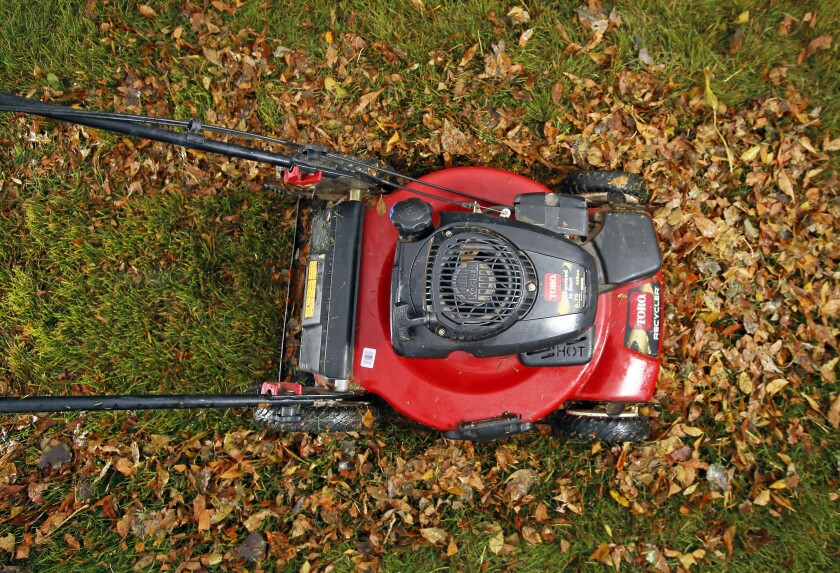FARGO — The fall dilemma is here: Should we rake our leaves little by little as they drop, knowing there are still more on the tree, or should we delay raking until the trees are totally bare and then accomplish the task in one fell swoop?
Maybe a good wind will carry them all away in the meantime. But what if the wind is from the wrong direction, and the neighbor’s leaves all end up in our yard, piled in huge drifts?
There’s a simple solution: just give up raking entirely. Surprisingly, mowing over fallen leaves and letting them remain is great for the lawn, and there’s research to prove it. In the late 1990s, Michigan State University wanted a research-based answer to the question of whether it’s better to remove leaves from the lawn or pulverize them back in.
During the extensive three-year study, scientists considered three different leaf layer thicknesses: none; 3 inches; and 6 inches of mixed tree species, mulched in with a rotary mower every October. In summary, mowing leaves back into the lawn proved beneficial for turf health. Lawn areas where leaves were mulched were healthier than the lawn area receiving no pulverized leaves.
MSU concluded, “Research clearly indicates that mulching leaf litter into existing turf grass provides benefits for the soil and turf grass plants by adding nutrients, retaining soil moisture, loosening compaction and reducing weed growth.”
ADVERTISEMENT
MSU’s findings have made great impact on autumn lawn care. Their studies showed that homeowners can achieve a nearly 100% decrease in dandelions and crabgrass by mulching autumn leaves for three years, as the shredded leaves cover up bare, weed-prone spots between grass plants. Mulched leaves keep the turf’s soil warmer in winter and cooler in summer. Mulched lawns green up faster in spring, with less fertilizer needed.
Researchers at MSU suggested using a rotary mower that pulverizes leaves well, such as a mulching mower or a mower with the discharge opening covered, and with the mower height adjusted to a high setting. Leaves should be dry and mowed slowly with a sharp blade to grind leaves fine. If leaves are still in large pieces, go over the lawn again at right angles to the first pass.

The optimum time to mulch the leaves is when you can still see some green grass through the fallen leaves, rather than letting the leaves gather too thickly. Pulverized leaves should settle into the turf within a few days, and remaining leaf litter shouldn’t be allowed to cover grass blades entirely. If leaves accumulate in a layer too thick to mulch, an option is to rotate by raking or bagging one week, then mulching the next.
The beneficial effects of mulching leaves back into the lawn are most noticeable after following the practice for several years. Leaves are a natural soil-builder as they decompose. Besides MSU, mulching leaves is advocated by Purdue University, the University of Minnesota, North Dakota State University, Consumer Reports and even Bob Vila.
Don’t let unmulched leaves lay on the lawn over winter as they can smother grass. If your yard has too many leaves to mulch into the lawn, you can put the bagger attachment on, collect the leaves and spread the mulch on flower beds and gardens, incorporating it into the soil. Microorganisms will break down the organic materials, improve soil health and release nutrients. Mulched leaves will biodegrade and disappear by spring.
Well, there you have it. Raking leaves may soon be relegated to nostalgia and Normal Rockwell prints.
ADVERTISEMENT
I will admit, though, I miss the autumn aroma of a burning leaf pile.
Don Kinzler, a lifelong gardener, is the horticulturist with North Dakota State University Extension for Cass County. Readers can reach him at kinzlerd@casscountynd.gov or call 701-241-5707.










